Japan’s efforts to become a world-class tourist destination have succeeded beyond anyone’s expectations. Visitors’ statistics are jumping off the charts. Over 30 million foreigners visited Japan in 2018, an increase of around 300 percent over the past five years.
The majority of visitors travel the Golden Route — Tokyo, Osaka, Kyoto and Hiroshima — on their first journey into Japan. Those famous cities are all on Honshu, Japan’s largest island. But while they’re definitely well worth visiting, over-tourism is taking its toll.
To explore the wonders of Japan sans the crowds, why not explore its lesser-known islands instead?
Although Japan is smaller in land size than California, the country is an archipelago of 6,852 islands that stretch across 2,000 kilometers, from subarctic Hokkaido to subtropical Okinawa. Which of the thousands of islands are most worth visiting? We asked long-term foreigner residents and Japanese travel authorities to choose the most exceptional options from among all the islands they have visited, and compiled this list of 12 must-see destinations.
Some contain UNESCO World Heritage Sites. All offer a multi-sensory kaleidoscope of cuisines, sports, temples, shrines, art, hot springs and more. Get a taste of just one of these islands and you’ll be coming back for more.
Sado Island
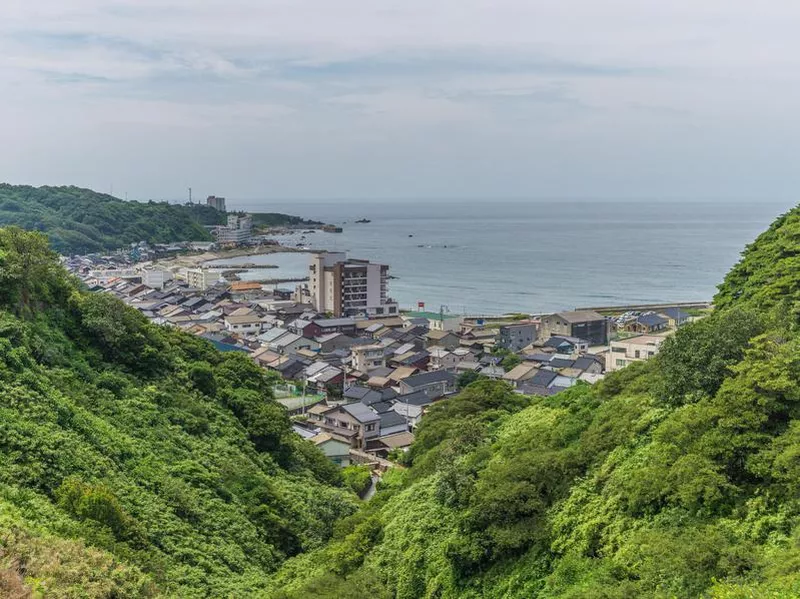
Getty Images
Fierce winds, tides and earthquakes sculpted eerie rock formations that look like waves or pyramids on this stunning island.
Koto, Japan’s premier taiko drum group, draws inspiration from Sado’s seascapes and landscapes. Every August, the group celebrates at the Earth Festival, Sado’s most famous outdoor event, bringing Japanese and non-Japanese percussionists to dance and drum. The air, buildings and land around the festival grounds vibrate.
But there is more to Sado than international music festivals and amazing landscapes. Ruling governments over hundreds of years exiled political enemies — emperors, samurais, monks and performers who had fallen from grace — to Sado. Influenced by these elite exiles, Sado bloomed with temples, shrines, noh stages and other cultural works that are now national treasures.
You might see redheaded, pink-winged endangered Japanese ibises in the wild. Once extinct on the island, those birds are making a comeback as living symbols of Sado’s beauty.
Iriomote Island
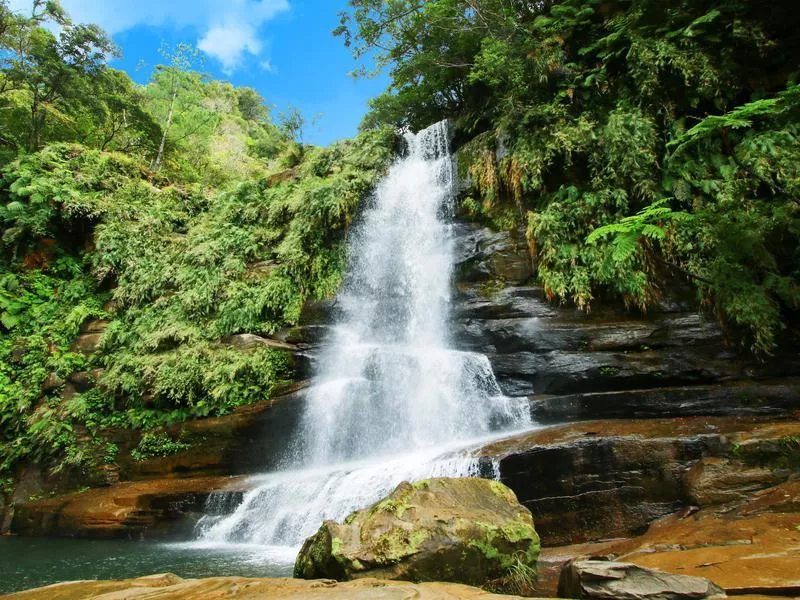
Getty Images
“I have great memories of Iriomote. Tiny little tropical island, we felt like we had the place to ourselves.” So says Patty Kunze, ex-Japanese resident and world sojourner, who arrived by boat — there’s no airport.
Ninety percent of mangrove-forested Iriomote Island is within Iriomote-Ishigaki National Park. Iriomote’s forests harbor the endemic endangered Iriomote cat and other rare creatures. The nearby sea is ringed by coral reefs. Okinawa tourism expert Takuji Machida boasts that Iriomote is “perfect for trekking, kayaking, diving, snorkeling and other adventure travel.”
Visitors soon realize that the most exciting modes of transportation are kayaks, canoes and feet. Experience standing barefoot on sand shaped like stars at Star Sand Beach while millions of stars illuminate the evening heavens.
In 2018, Iriomote qualified to become Japan’s first International Dark Sky Park. Come enjoy the nexus of sea, land and skies.
Naoshima
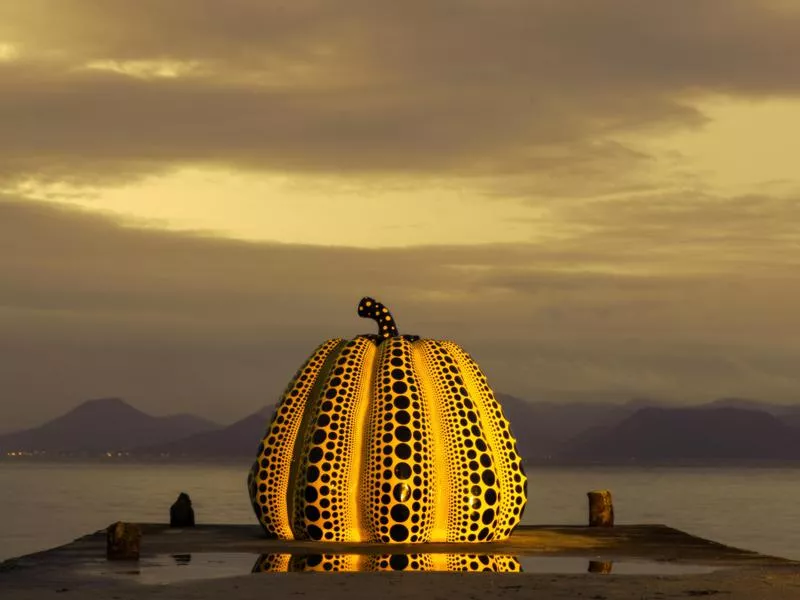
Getty Images
A gigantic hole-covered pumpkin is the most striking sight you’ll encounter when arriving at Naoshima Island’s Miyanoura Port.
Join the children playing inside this artwork by Yayoi Kusama, Japan’s most colorful modern artist. It’s not the only piece to be found on Naoshima, a living museum where locals and visitors regularly interact with art. Here, local artists have converted abandoned homes into contemporary artworks. You can also bathe in art at I Love Yu, a functioning public bath facility and art installation.
Discover one of Monet’s famous paintings of water lilies in an underground museum, or a George Rickey sculpture plopped onto a sandy beach. Renowned Japanese architect Tadao Ando designed Naoshima’s combination hotel and museum, Benesse House Museum.
Through art tourism, Japan’s Benesse Corporation is reviving a once economically depressed island. It is now an unforgettable attraction for art and island lovers.
The Islands and Islets of Matsushima
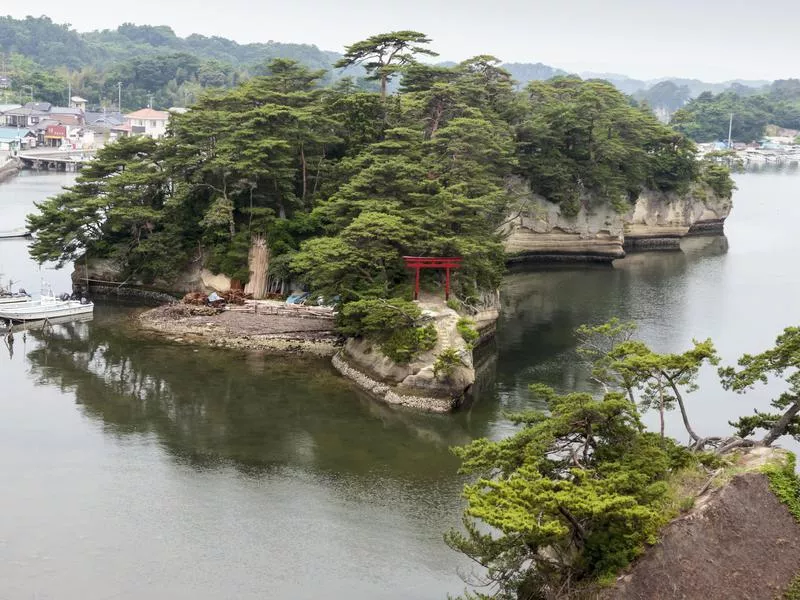
Getty Images
The Japanese have a penchant for making lists of the most beautiful or astounding locations, mountains, hot springs and the like. And for centuries, they’ve ranked Matsushima as one of the country’s most scenic locations.
In this tight cluster of 260 small islands in a bay, photographers from around the world congregate to capture images of iconic Japanese seascapes.
Ride ferries through the charming bay to view windswept Japanese black and red pines growing on tiny craggy islets. Or stroll quaint footbridges to three of the islands. A popular viewpoint is Karantei, a teahouse that is almost 400 years old. Sip traditional matcha while watching the sea ripple.
The Japanese say that their most cherished haiku poet was at a loss for words to describe the astonishing beauty of Matsushima.
Okunoshima

Getty Images
Japan is a land where kawaii, or cuteness, permeates modern culture. Many expats in Japan bring guests to Okunoshima, off Hiroshima’s coast, for an intensely cute experience.
Hundreds of rabbits roam on this island. Unafraid of people, the furry muggers stalk visitors to take their edibles.
If you cannot go there and need to smile now, check out this BBC video that shows visitors rolling on the ground in laughter while rabbits jump and crawl all over them.
While the rabbits represent the adorable side of Japan, the Okunoshima Poison Gas Museum showcases the dark side of Japan’s history. During WWII, while serving as a poison gas factory for chemical warfare, the government removed residents and their pets. Without predators, rabbits bred like proverbial rabbits do. (The island is, of course, no longer producing poison gas.)
Why go to an animal café when you can encounter this island of rabbits instead?
Hashima Island or ‘Gunkanjima’
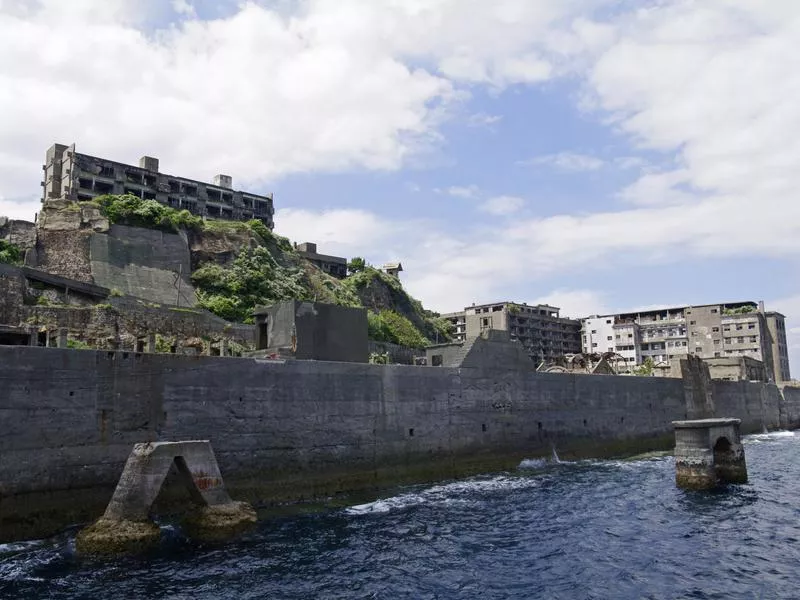
Getty Images
Off Nagasaki’s coast lies Hashima, a controversial World Heritage Site. Locals use the nickname Gunkanjima, meaning battleship, which the 480-meter-long, 150-meter-wide island, covered with thin apartment buildings, resembles.
Allied forces reportedly tried to bomb and sink the “battleship” during WWII. In the 1950s, the now-uninhabited island had the highest population density in the world. At its peak, around 5,500 people crammed into high-rise concrete towers. Japanese workers and conscripted or enslaved — depending on your viewpoint — Korean laborers toiled in coal mines that spread under the ocean floor. The Korean government, not surprisingly, opposed Hashima becoming a World Heritage Site.
The island has made an appearance in two films: a Korean movie depicting an escape attempt by Korean laborers, and the 007 flick “Skyfall.”
French expatriate and Nagasaki resident Natalie Daiguji says a fascinating tour of the island takes visitors through the mysterious and horrible periods of Japan’s rush toward industrialization and WWII.
Yakushima
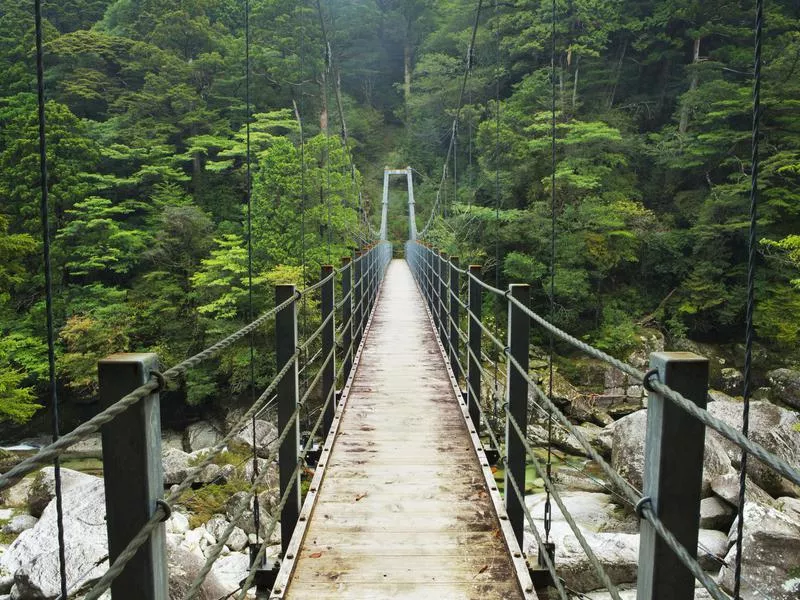
Getty Images
After hiking Kyushu’s highest peak, Mt. Miyanouradake (1,936 meters), everyone wants a bath. Disrobe at Hirauchi Onsen, a clothing-optional hot spring, during low tides only. Otherwise, it’s underwater.
If scaling a mountain sounds daunting, select a shorter course. A popular route leads visitors to Jomon Sugi, perhaps the oldest tree in Japan and one of the oldest worldwide. Loggers removed most the island’s biggest cedar trees centuries ago and shipped them to Kyoto for temple construction, and people now venerate the surviving ancient trees.
After spending the day outdoors, camp or crash in free mountain huts.
In summer, loggerhead sea turtles lay eggs on the island. Because it often rains here, you’ll see vast areas of moss. Aki Akama of the Japanese Ecotourism Society recommends observing “the mysterious scenery of the moss world.”
Yakushima is a World Heritage Site 60 kilometers from Kyushu’s southernmost tip.
The Oki Islands
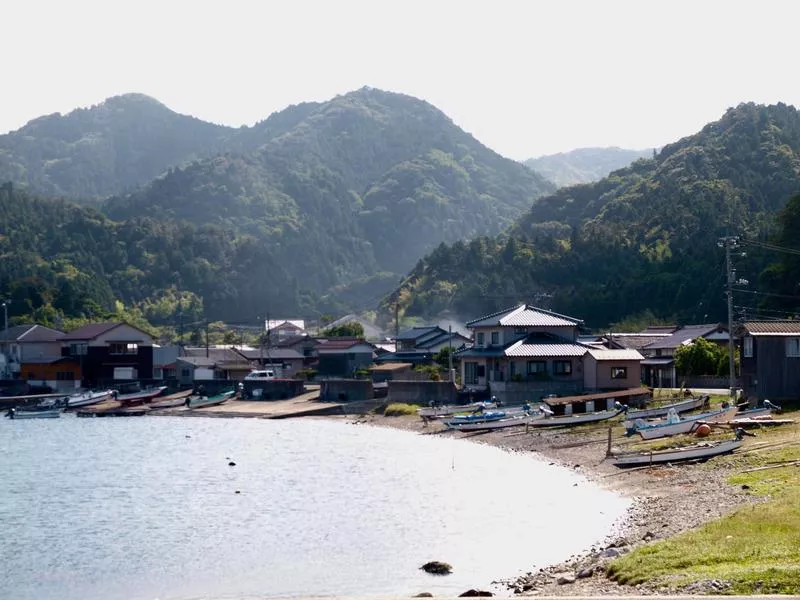
Getty Images
Shimane is the least touristed prefecture in Japan. Most people, even those in Japan, know little of it. However, numerous travel and culture writers in Japan rave about Shimane.
Shimane’s Oki Islands are one of the few places in the world where visitors can experience bull sumo. These matches are like traditional sumo: Usually the bouts are short, and there are no injuries. Two bulls push until the strongest dominates. Villagers practice Shinto rituals involving prayer, salt and sake-drinking while watching the action.
If you drive, watch out for livestock on the roads. The population of the Oki Islands is around 20,000, not counting roaming cattle and horses.
The Oki Islands include the four small islands of Chiburishima, Nakanoshima, Nishinoshima and Dogo, as well as almost 200 islets. Each has a unique atmosphere and scenery. Ancient and unique customs still continue in the remote Oki Islands, lands of waterfalls, cliffs, forests and deep seas.
The Marine Caves of Shimane Prefecture’s Kaka Harbor
A 50-minute trip through Kaka Harbor can blow a traveler thousands of years into the past.
“I felt for the first time in so long that I was in a foreign country,” said one expatriate after visiting a marine cave known as “Old Kukedo.” “I was deeply moved.”
For thousands of years, parents have been building cairns of sea stones and praying for children who died before, during or soon after birth. Waves and light lick the cave’s entrance, but darkness fills the back. The air smells of the sea and incense. Plastic toys and tiny rubber shoes indicate that the tradition continues.
Ancient and modern statues of Jizo, protectors of the souls of children who die young, line the cave. Legends say that the god who guards Shimane was born in a nearby cave called “New Kukedo.” The two caves are referred to as Kaka-no-Kukedo. A boat tour of Kaka Harbor takes visitors to see history and feel culture.
The Ogasawara Islands
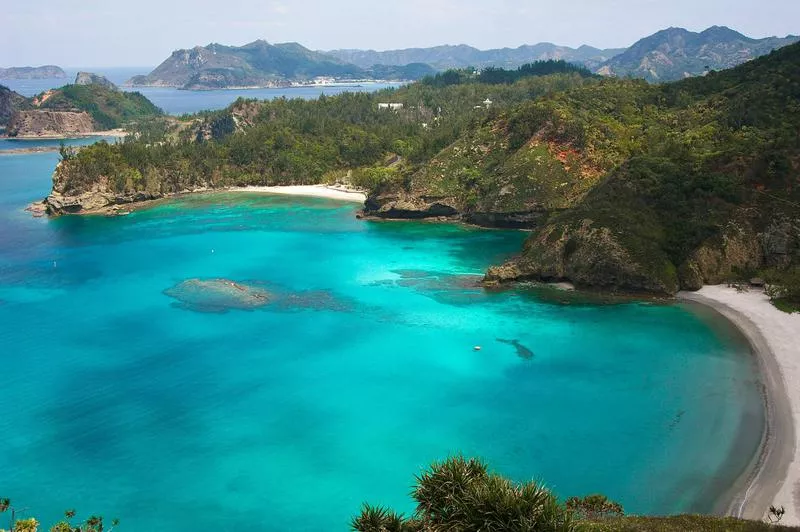
Getty Images
Approximately 1,000 kilometers from Tokyo, the Ogasawara Islands is a small volcanic archipelago in the Pacific. Just two of the islands, Chichijima and Hahajima, are inhabited. Going to them is the holy grail of deep-sea adventure in Japan.
The only transportation to Chichijima is a 24-hour ferry ride. Travel another two hours to reach Hahajima, where the seas are deep and clean. Wreck-diving is popular, or visitors can swim year-round in coral reefs. The islanders gave up whale-hunting for humpback whale-watching from February to March and sperm whale-watching from May to November.
Besides an awesome choice of sea sports, there are mountains and jungles to explore and protect, though rules forbid camping and off-trail hiking in many areas. Night hikes in particular are popular.
Far from the mainland, various unique species developed. Green luminescent mushrooms are just one of the countless wonders of the Ogasawara Islands.
Teuri Island, Hokkaido
The birds and the sea urchins and the scenery are the main attractions here.
Around 300 people live on Hokkaido’s Teuri Island, while the bird population is over one million. Bird-watchers from around the world journey to Teuri Island to observe the loud and lively courtship dances of spectacled guillemot and to watch hundreds of thousands of pairs of rhinoceros auklets heading home in the evening light after feeding in the sea.
Equally impressive are sea urchin, which reside in vast quantities in the surrounding sea. Teuri Island is one of the few places in the world with an annual sea urchin festival, where you can savor fresh sea urchin prepared as sushi, grilled, steamed, raw in its shell or mixed with Japanese sake.
The Japan Ecotourism Society encourages travel to Teuri Island, as money from ecotourism assists the survival of the endangered birds.
The Amami Islands
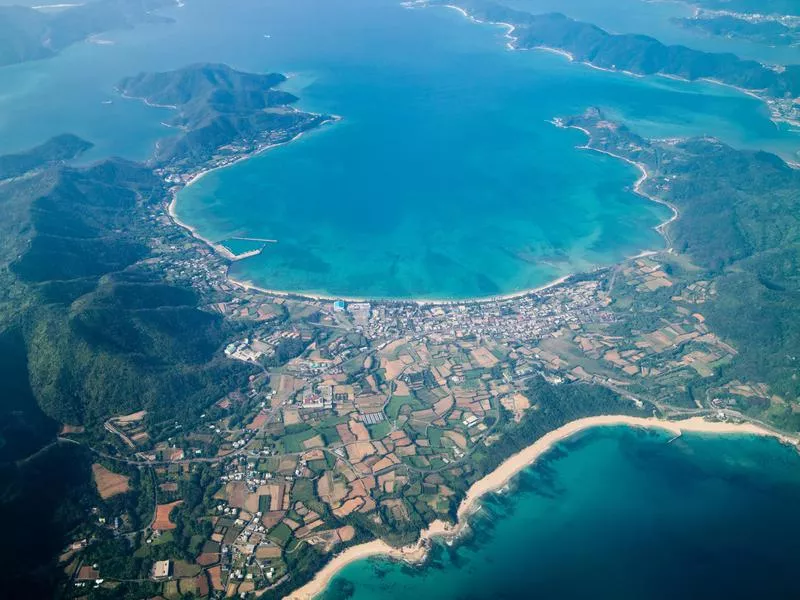
Getty Images
Some visitors compare the Amami Islands to the Hawaiian Islands, and with their similar epic beauty, it’s easy to see why.
The sparkling, warm, white sands of Yadorihama Beach on Amami Oshima, the largest of the islands, encourage visitors to walk barefoot and jump in the cobalt blue waters. Residents describe the sea color as Amamin Blue. The coral in the sea and the caves on land are exceptional.
Cavers should explore Shoryudo Cave on Okonerabu Island, a raised coral reef island.
Though Japanese, Amami Island culture is a meld of Okinawan, Korean and Southeast Asian cultures. Musical instruments decorated with snake skin, and Oshima Tsumugi silk kimonos, are traditional products of the Amami Islands, with colors and patterns that are simpler than those found on the mainland.
Unsure which island to relax on? Ferries make island-hopping easy. No matter where you go, choose to luxuriate in high-class hotels or camp on beaches.
The Amami Islands are a distinctive part of Japan that you cannot find anywhere else.